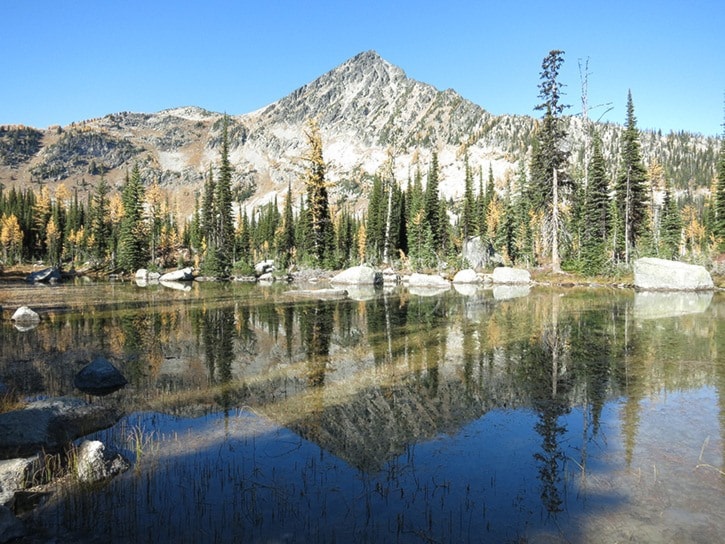This past summer was a dry one. It seemed like the weather forecasters, at times, were trying to co-operate by telling us to expect some showers. Many forecasts would start out with a prediction of 60 per cent chance of rain. Then it would drop to 40, and then 30, and then there was no rain at all the whole day. So I thought I would take my chances on an overnighter in the Redding Creek/Snowcrest Mountain area.
The forecast was for 60 per cent chance of showers with a little more than a bit of wind. But I was in for another kind of “weather”. When I headed up Redding Creek Road to scout around for a campsite I spotted smoke, a high column of it. I thought the fire I had seen in the area several weeks earlier was under control, but then I realized this was in another little valley.
When a got about three-quarters of a mile away, I could hear trees falling, snapping and crackling as they burst into flames. Then there would be a sizzling followed by a roar as a group of trees ignited and almost exploded, sending flames sometimes almost 300 feet into the air. All this was happening on a north facing slope, which shows how dry the forest really was — dense groups of trees would ignite so quickly as the fire progressed up the slope.
I quickly exited the area and drove up another spur where I could see what was happening with the earlier fire. There were perhaps two smoke spots but I didn’t want to camp there, either, because if the wind changed, it might drive the larger fire right down Redding Creek, thus blocking any way out. So, I headed out and decided to camp at Oliver Lake forestry campsite below Gray Creek Pass.
It was a fairly calm evening but getting dark fast. About 11 p.m. the wind began to blow and then it started to rain. I could hear the rain being driven into the trees and shrubbery. This was the rain that I didn’t think would come. However, the rain wasn't so disturbing as the wind. Each time the wind would come up, I waited for a tree or two to crash to the ground and hoped it wouldn't end up on the car much less the tent. When choosing a camping spot I had noted that most of the trees around the site were pretty healthy.
After a time, the rain and wind seemed to slack off and I would relax a bit. But for the next unknown number of hours (which at night are longer than in the daytime), repeatedly the wind would die down and then come up again, at first lightly and then developing into a roar not much different than the sound of a jet taking off. I could imagine how much the trees might be bending in the wind. Fortunately, in the morning the situation was back to normal except for spitting rain and a considerable drop in temperature. I ate and vacated to warmer temperatures on the Pilot Bay Trail.
Weather at higher elevations is usually more severe than in the valleys. It can be colder, wetter and windier. Sometimes, though, I have camped on a mountain slope and discovered there was frost in the valley bottom, and, also have found calm weather higher up but windy conditions lower down where the wind was following the valley. The advice for all of us, when thinking about hiking and camping at higher elevations, is to go prepared for harsher conditions.
I really don’t totally regret that rainy and windy camping event. Inside, the tent was dry, although at times I thought it was going to blow away and take me with it. In nice weather, Oliver Lake, Gray Creek Pass, Redding Creek, Snowcrest Mountain and Baker Lake areas are beautiful areas to hike and camp in. In fact, you may not have to wait until next summer to do that, because we could still have some nice weather through October and possibly into the first week of November.
Ed McMackin is a biologist by profession but a naturalist and hiker by nature. He can be reached at 250-866-5747.
